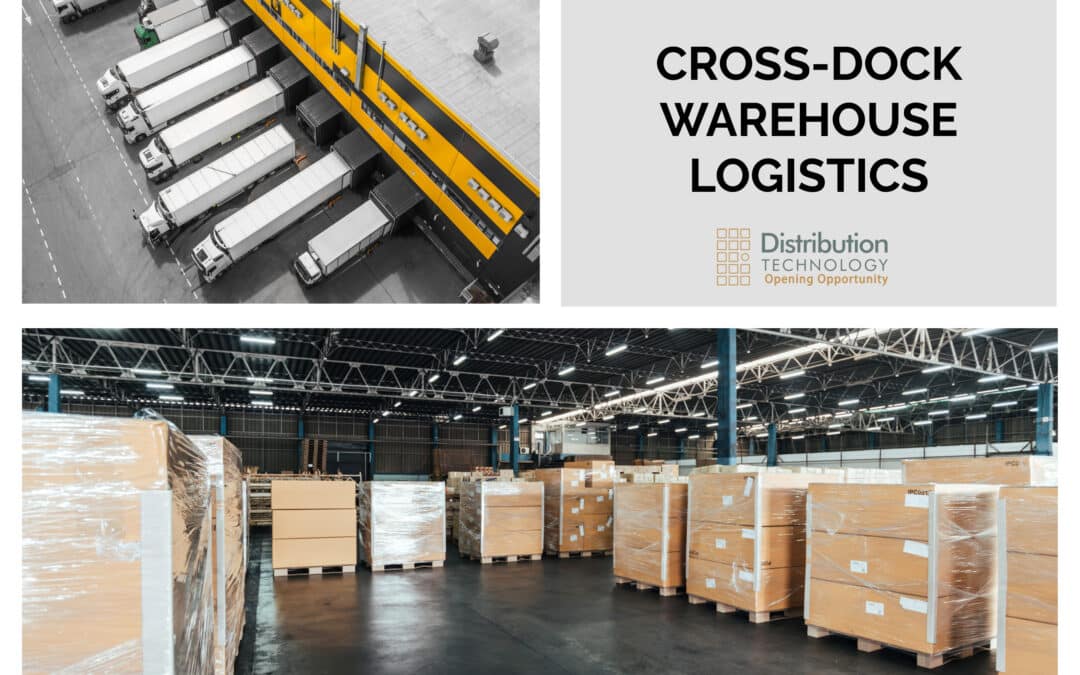For businesses seeking efficiencies in the supply chain, cross-docking can be a powerful tool. The order fulfillment strategy is designed to limit the time that freight spends in a warehouse, allowing it to move more quickly on its route and reducing costs in the process.
Cross-docking typically is conducted at a warehouse with one side devoted to inbound items and one side devoted to outbound items. In this arrangement, goods avoid the usual storage period in the warehouse, spending as little as a few hours in the facility before moving onto their destination – in effect, they cross the docks from the inbound side to the outbound side, skipping the usual middle stage of the process.
Cross-docking requires the right resources and proper planning, but it can yield many valuable benefits to shippers when the process is expertly managed. Distribution Technology, a third-party logistics provider based in Charlotte, North Carolina, has a wealth of experience in cross-docking, helping clients with a variety of backgrounds to enjoy the advantages that the innovative process can bring.
Handling is reduced, saving time and money
The middle-stage tasks of picking and storage of freight is eliminated with the cross-docking process. Goods being managed through cross-docking are never racked and therefore there is no need for them to be part of the picking process at a warehouse. Material handling needs are kept to unloading, staging and loading. Less material handling leads to a sharply reduced risk of damaging the freight. The reduction in necessary handling also increases operator productivity and reduces labor costs. The inherent efficiency and comparable simplicity that comes with eliminating the storage and material handling components leads to quicker deliveries, and that strengthens customer service while providing improved agility to your supply chain. In today’s supply chain – when speed is not just requested but required – cross-docking can provide an important boost.
Inventory cost savings and flexibility
Freight spends a limited time in the warehouse, reducing the needs for inventory space and decreasing inventory costs as a result. Invaluably, cross-docking also helps create more storage space in the warehouse for freight that is not suitable for cross-docking and needs to be stored in the warehouse for a longer period of time before being distributed. The type of freight being distributed does not limit the use of cross-docking. It can be used for anything from raw materials to finished goods. The recipient of the freight also doesn’t matter – cross-docking works for retailers and manufacturers just as well as it works for individual consumers. In addition, less power is used overall in the distribution of goods because of the reduced time that freight spends in the warehouse, reducing the carbon footprint of the freight.
Quality control
Although the freight spends reduced time in the warehouse, it does not mean that it is rushed through the space or that important steps are skipped. Freight is still subject to recording and review at the warehouse and to quality control, including inspecting inventory to be sure there was no damage during transit. In some cases, the loads are already prepared for final distribution when they arrive at the warehouse, meaning they simply are received and distributed. In other cases, the products are repacked in a temporary storage area based on their final destination and orders are consolidated before they are distributed, helping shippers save on shipping costs.
Sharp and diligent coordination is essential to ensure that cross-docking is executed with the utmost efficiency and accuracy. That requires a strong partner with warehouse space designed to accommodate cross-docking and the expertise and resources to ensure that your supply chain is integrated to support cross-docking every step of the way. Distribution Technology, which has more than 1.2 million square feet of organized warehouse space, creates that well-synchronized operation for shippers.
If you are looking for a warehousing company that can help your business take advantage of the benefits of cross-docking, contact us.




